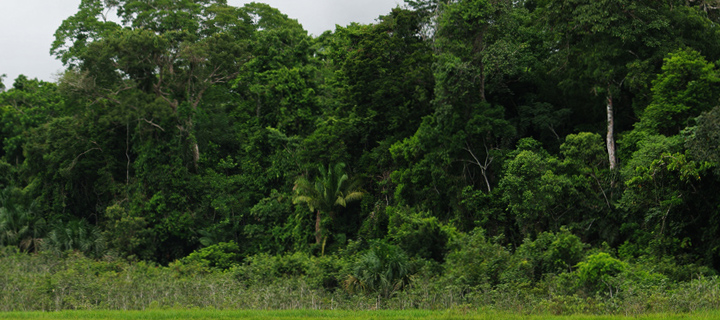
April 29. I am delighted to have been accepted to a residency this summer at the Centro Selva in the Amazonian tropical rain forest of eastern Peru. Will be brushing up on my Spanish for the next couple of months!
June 27. Just under three weeks to go before my departure. I have one more trip to the travel clinic for the last of my shots: hepatitis (A & B), yellow fever, dengue fever, etc. Spanish classes are coming along well, and I am trying to reduce my packing list to the bare essentials – carry-on only.
June 29. While I’m at the Centro Selva (“selva” means “jungle” in Spanish) I’ll be learning about local history and culture with visits to the region – the nearest town is Pucallpa, pop. ca. 300,000. I’ll also have time to work on musical projects, the largest of which is a 10-minute commissioned piece for choir and small instrumental ensemble.
July 22. Miraflores (Lima). I’ve been here for four days now and getting to know my way around a little. Apart from visiting some of the usual tourist attractions I’ve been to visit the National Conservatory of Music and learned a little about the programmes they hold there. I met the Academic Director and also had a nice chat with one of the office administrators whose English was much better than my Spanish, and she invited me to a noon-hour percussion concert (one of several during the current Fiesta de la Percusión) where I saw and heard a number of Peruvian instruments that I might want to include in the piece I’ll be writing when I get home. Yesterday I also visited the MALI (acronym for the Museo de Arte de Lima), and in the evening attended a guitar concert at the Miraflores Cultural Centre.
Here are photos of the Cathedral (no organ, unfortunately),a public building, and a group of school kids who came to talk to me so they could try out their English, all in the Plaza Mayor in the old part of Lima, followed by a snap of the gate to Chinatown.
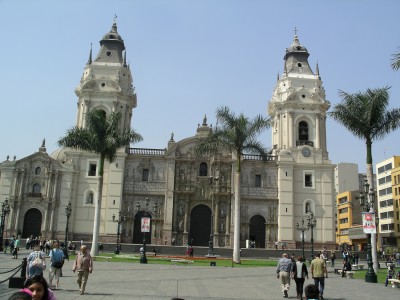
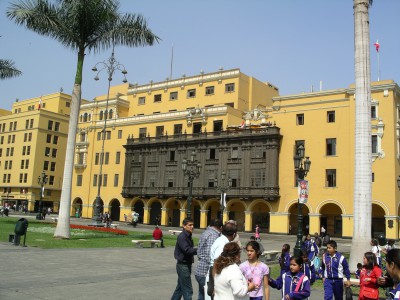
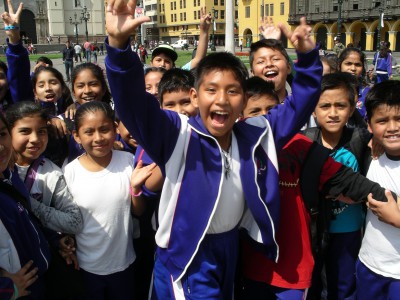
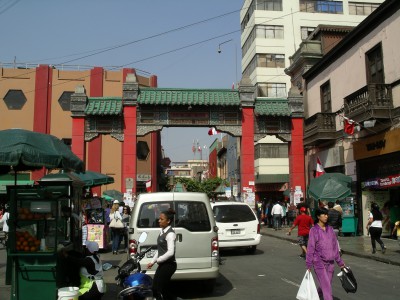
Miraflores is an upscale suburb of Lima, generally cleaner and safer than Lima proper, with big department stores, and many American franchises, including the usual Starbucks, MacDonalds, KFC, etc. There is a scenic walk along the tops of the cliffs overlooking the ocean, and whom should I encounter but this character, who, you may recall, came from Peru originally.
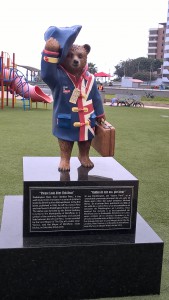
July 23. Today walked 45 minutes south to the next suburb of Barranco, known for its many galleries and its bohemian atmosphere. It was a cool, cloudy day with moist air being blown inland from the ocean (known locally as garúa). Although only 12° south of the equator, Lima’s climate is affected by the Humboldt current which brings cold water up from the Southern Ocean and moderates the heat of the tropical sun, producing high humidity with clouds and mist. To the east of the city the Andes Mountains prevent the tropical climate, including storms and rains from the Amazon basin, from reaching the coast.
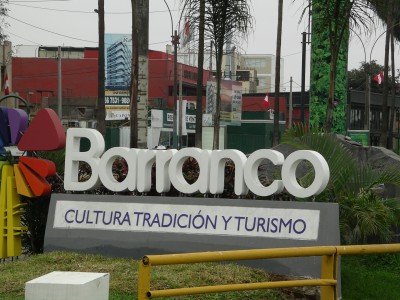
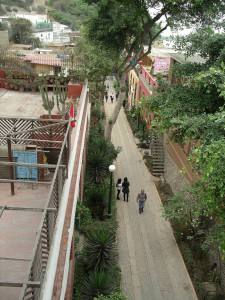

July 25. Yesterday’s highlight was finding a pipe organ! After a lot of research in which I came up empty-handed, yesterday, with the help of a new Peruvian-Canadian friend, I discovered a pipe organ in the basilica of María Auxiliadora near the downtown area of Lima. This is a 2-manual Tamburini organ, built in Italy and originally installed in 1934. After surviving two major earthquakes (1940 and 1974) and numerous partial restorations over the years, the organ is being now completely rebuilt by local technician Alejandro Rodríguez, and the expectation is to have the instrument playing again in early 2016. The pictures below show the empty case ready to receive the pipes once the electrical wiring and the necessary leather work have been completed.
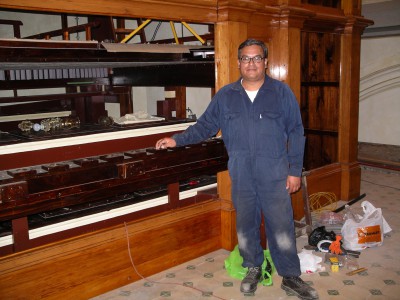
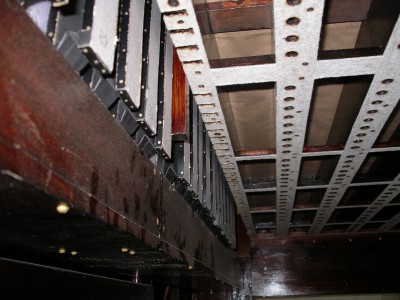
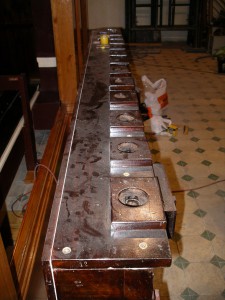
On Sunday I fly to Pucallpa, and from there travel by bus out to the Centro Selva for three weeks without internet.
26 July. Today was up at 5:30 for a 6:00 taxi to Lima airport and a flight to Pucallpa, one hour over the Andes and into the Amazon Basin. A complete change from the cool and damp west coast to the hot and extremely humid Amazon. The plane arrived in a torrential downpour, apparently the first real rain they have had for some time, and so we sat on the tarmac for 20 minutes until the rain stopped.
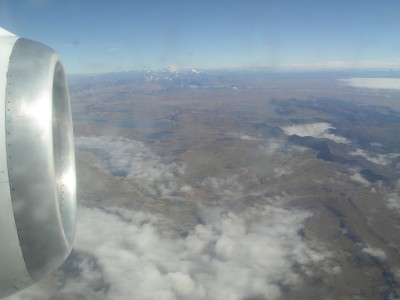
PHOTOS: Flying over the Andes. (1) the treeless sierra. (2) the green Amazon region. (3) loading up the camioneta at Pucallpa airport.
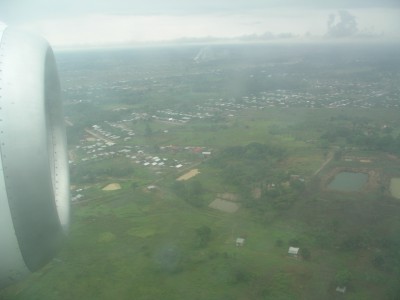
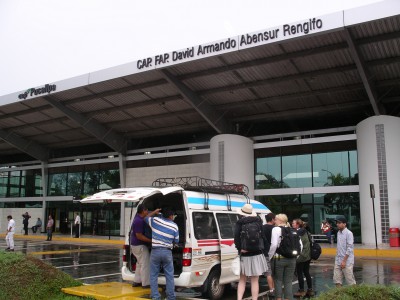
There were four of us on the flight going to the Centro Selva; one other had missed her plane and would need to be picked up around 1 p.m., so… we drove in our minibus to – where else? – the shopping mall, to find coffee and some breakfast. This was a bit of an anomaly in an otherwise wild-looking jungle city. The chief method of transport in Pucallpa is the motokar – a motorcycle fitted with two wheels in the rear and a covered bench for 2 or 3 passengers. The roads were filled with these vehicles as we drove through the town to the mall, a fairly recent addition to the town plan.
After coffee and rolls, Diana’s mother Hilma and I went back down to the minibus and our driver took us back into town in search of guitar strings, as someone was going to lend us a guitar out at the farm but we weren’t sure if it had all its strings. Then we all went back to the airport to pick up our Turkish colleague Nurten and headed out along the main paved highway to the farm. Only the last 3 km was on a rough clay road and we turned in the gate of the Centro Selva.
The family actually owns 4 sections of farm. We’ll be here at the one closest to Pucallpa for the first week. There is electricity (from the city) but fresh water comes from rain barrels and a spring. As the oldest male I have a sleeping room all to myself, but which doubles as the dining room during the day. The women are in the main sleeping room and the rest of the men are a 5-minute walk away in a cabin beside a couple of fish-ponds. The ponds are still filling up from the spring, having just been emptied and cleaned out, but apparently within a couple of days we’ll be able to swim there. It’s been a long day – I think I’ll sleep well tonight, despite the jungle noises mixed with the lowing of cattle.
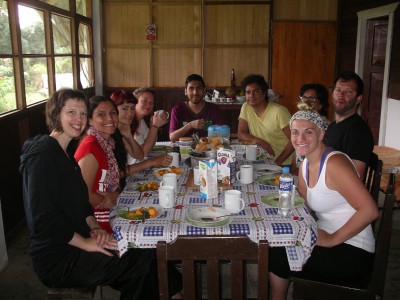
July 27. This morning a 3-hour walk around the farm, parts of which were on higher, dry ground where cattle grazed, and parts in lower, damper jungle regions where Sr. Davíd, one of the farm staff, cleared the path ahead of us with his machete. Here we saw legions of leaf-cutter ants, armadillo burrows, vultures, many different butterflies, and a variety of plants including trees that can shift their position to find better sources of water. The humidity is extreme here, and combined with an average temperature during the day of about 30° it feels much hotter. Back at the house someone found a baby tarantula living in the roof over the balcony!
July 28. Today another 3-hour hike through another part of the acreage, this time on the east side of the road. Sightings today included bats, ant nests and termite houses, lizards, frogs and toads. Exhausted, we arrived back at the house around 1 p.m., hot and hungry, ready for a shower and lunch, but meals often seem to be later here in Peru – lunch didn’t materialize before about 3 or 4 p.m. and dinner was usually around 8 or 9.
After lunch I had a siesta, then did some research into local indigenous poetry and music, looking for ideas for my piece. After dinner Diana (our host and residency organizer) gave a presentation about the Shipibo-Conibo people and their art. These are the people who have traditionally lived along the Ucayali River and who are known for their textiles and their pottery. 50 or 60 years ago most were living without interference from the rest of the world, but now they have all but abandoned their traditional ways, relying on fishing and farming, sales of their art, and government support.
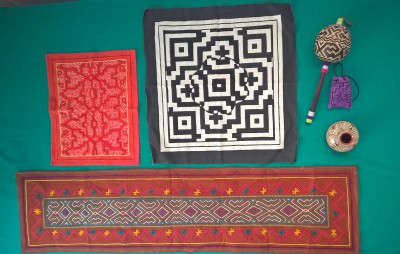 July 29. We spent the day with Miriam Soria, a Shipibo artist, and her three sons who presented a textiles workshop about some of the techniques they use for dying and decorating. We all had the opportunity to try on our own using an orange-brown dye made from mahogany and mango bark, and then painting with a grey mud which, when washed off, leaves a black colour. We were shown various traditional patterns to copy: unión, camino, amor and anaconda. I chose the first as it seemed the easiest! After dying the cloth the red-brown colour, we spent the rest of the morning painting in our patterns in mud, and then put them out in the sun to dry. After lunch we were given other pieces of cloth already dyed dark orange and invited to draw our own patterns. Before leaving, Miriam sang us a traditional Shipibo farewell song, and I am planning to integrate this into the music I am writing.
July 29. We spent the day with Miriam Soria, a Shipibo artist, and her three sons who presented a textiles workshop about some of the techniques they use for dying and decorating. We all had the opportunity to try on our own using an orange-brown dye made from mahogany and mango bark, and then painting with a grey mud which, when washed off, leaves a black colour. We were shown various traditional patterns to copy: unión, camino, amor and anaconda. I chose the first as it seemed the easiest! After dying the cloth the red-brown colour, we spent the rest of the morning painting in our patterns in mud, and then put them out in the sun to dry. After lunch we were given other pieces of cloth already dyed dark orange and invited to draw our own patterns. Before leaving, Miriam sang us a traditional Shipibo farewell song, and I am planning to integrate this into the music I am writing.
